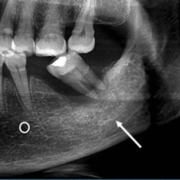High Initial fractional inspired oxygen May Reduce Mortality in Preterm Infants, reveals study

Researchers have found that resuscitation with higher fractional inspired oxygen (FiO2) levels significantly reduces mortality in preterm infants born at less than 32 weeks’ gestation. This conclusion emerges from a comprehensive network meta-analysis (NMA) of individual participant data (IPD) from multiple randomized clinical trials. This study was recently published in JAMA Pediatrics by James X. and colleagues.
While the benefits of lower FiO2 levels in term and near-term infants are well-documented, their impact on very preterm infants has been unclear. This study aims to evaluate the relative effectiveness of different initial FiO2 levels in reducing mortality, severe morbidities, and achieving optimal oxygen saturations (SpO2) in infants born before 32 weeks’ gestation.
The analysis included data from MEDLINE, Embase, CENTRAL, CINAHL, ClinicalTrials.gov, and WHO ICTRP, spanning from 1980 to October 10, 2023. Eligible studies were randomized clinical trials involving infants born at less than 32 weeks’ gestation. These trials compared at least two different initial oxygen concentrations for delivery room resuscitation, categorized as low (≤0.3), intermediate (0.5-0.65), or high (≥0.90) FiO2. Investigators from eligible studies were invited to contribute their IPD. The data were meticulously processed and verified for quality and integrity. A one-stage contrast-based Bayesian IPD-NMA was conducted using noninformative priors and random effects, adjusted for key covariates.
The primary outcome was all-cause mortality at hospital discharge. Secondary outcomes included morbidities associated with prematurity and SpO2 levels at 5 minutes post-resuscitation.
-
Data were obtained for 1055 infants from 12 of the 13 eligible studies conducted between 2005 and 2019.
-
The findings revealed that resuscitation with high initial FiO2 (≥0.90) was associated with significantly reduced mortality compared to both low (≤0.3) FiO2 (odds ratio [OR], 0.45; 95% credible interval [CrI], 0.23-0.86; low certainty) and intermediate (0.5-0.65) FiO2 (OR, 0.34; 95% CrI, 0.11-0.99; very low certainty).
-
High initial FiO2 had a 97% probability of ranking first in reducing mortality. However, the effects on other morbidities were inconclusive.
These results suggest that a high initial FiO2 (≥0.90) may be more effective in reducing mortality in preterm infants born at less than 32 weeks’ gestation compared to lower FiO2 levels. While the certainty of these findings varies, the data supports the consideration of higher FiO2 levels during resuscitation in this vulnerable population.
High initial FiO2 (≥0.90) may significantly reduce mortality in preterm infants born before 32 weeks’ gestation compared to low initial FiO2, albeit with low certainty. The potential advantage of high FiO2 over intermediate FiO2 is suggested but requires further evidence. These findings could influence resuscitation protocols to improve outcomes for preterm infants.
Reference:
Sotiropoulos, J. X., Oei, J. L., Schmölzer, G. M., Libesman, S., Hunter, K. E., Williams, J. G., Webster, A. C., Vento, M., Kapadia, V., Rabi, Y., Dekker, J., Vermeulen, M. J., Sundaram, V., Kumar, P., Kaban, R. K., Rohsiswatmo, R., Saugstad, O. D., & Seidler, A. L. (2024). Initial oxygen concentration for the resuscitation of infants born at less than 32 weeks’ gestation: A systematic review and individual participant data network meta-analysis. JAMA Pediatrics. https://doi.org/10.1001/jamapediatrics.2024.1848
Powered by WPeMatico



















